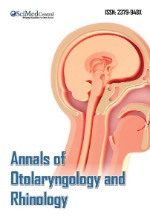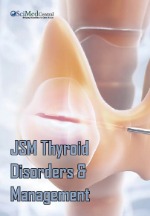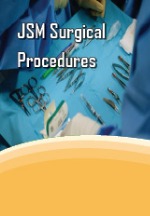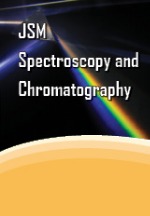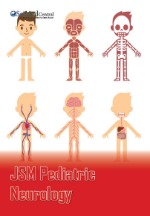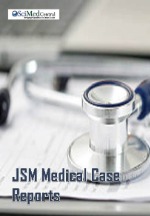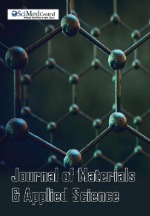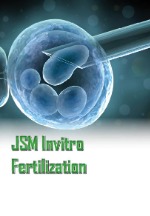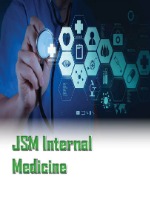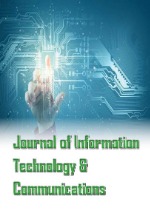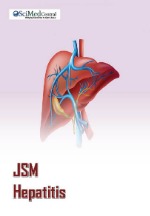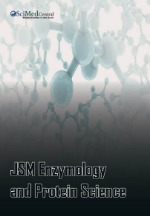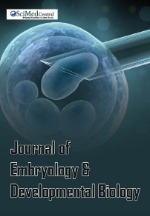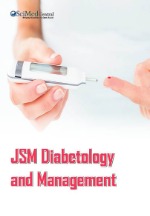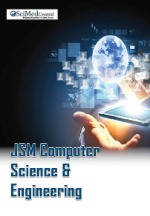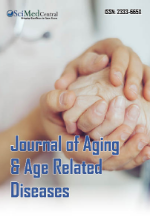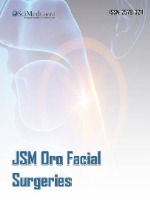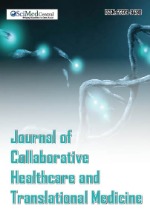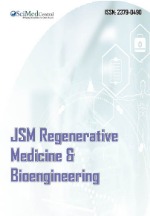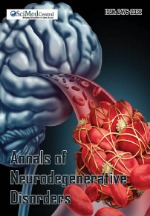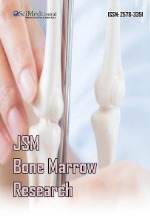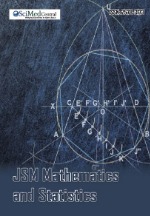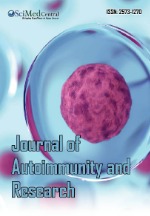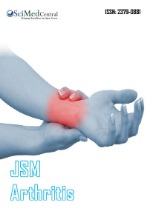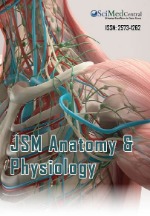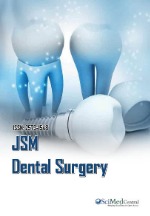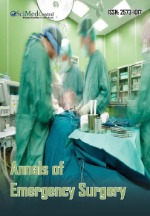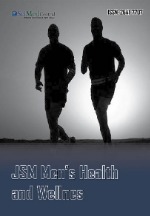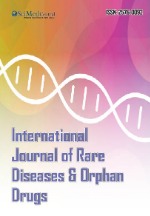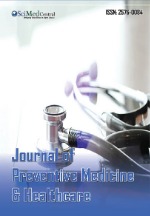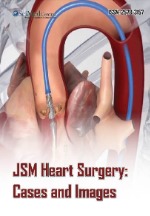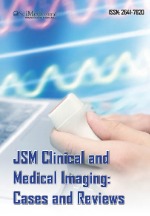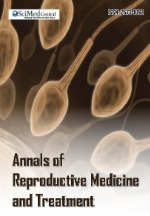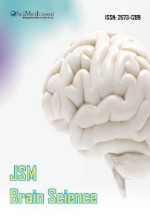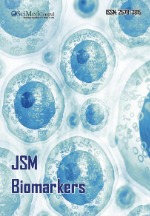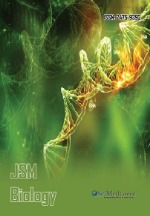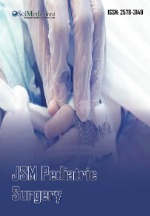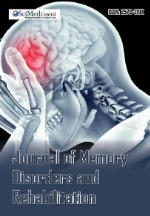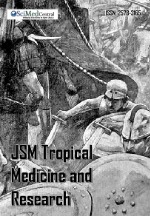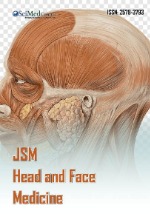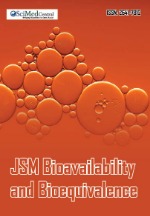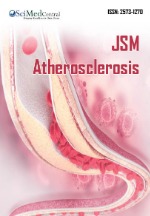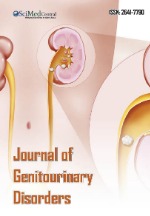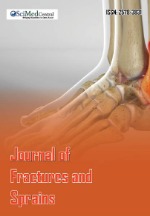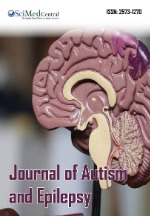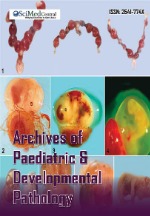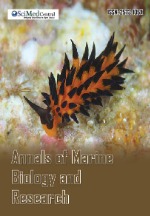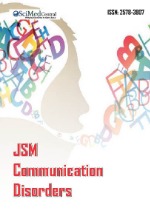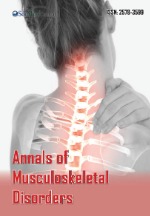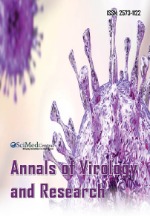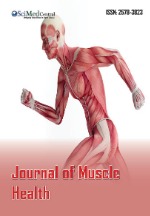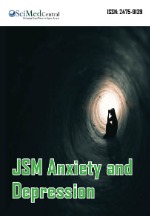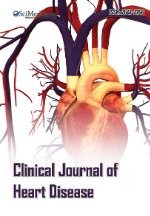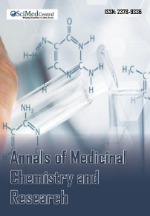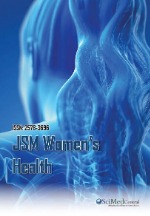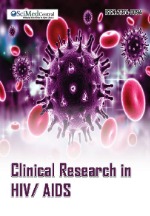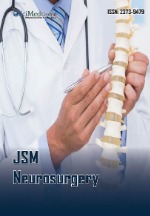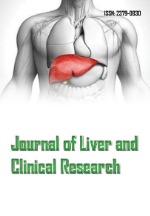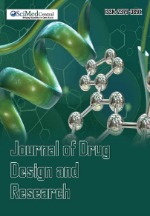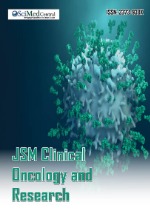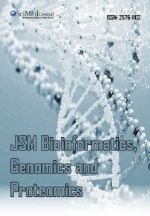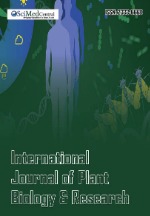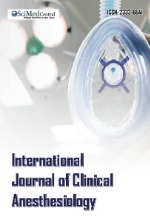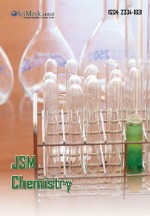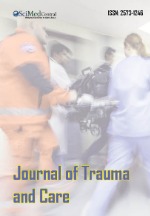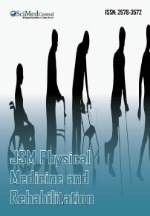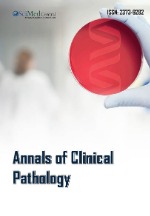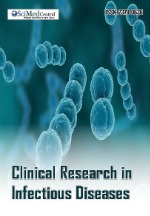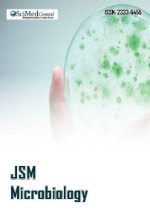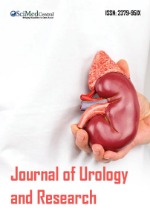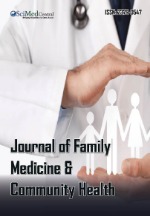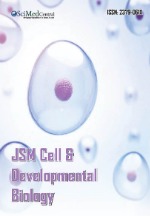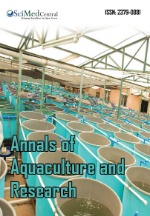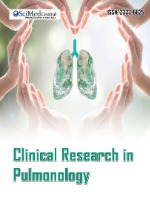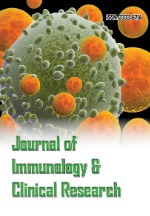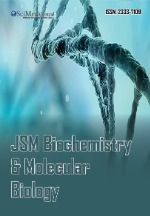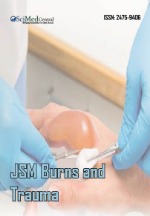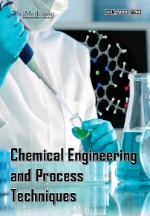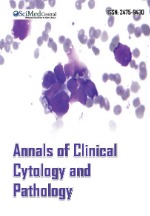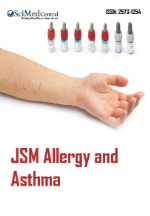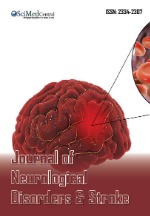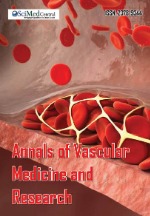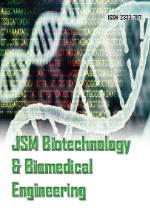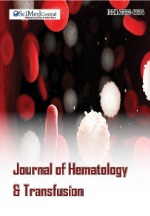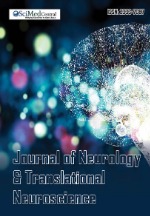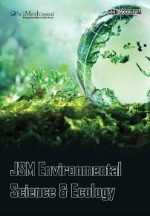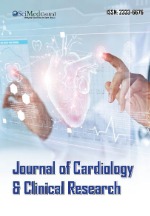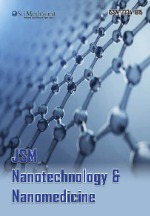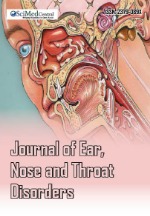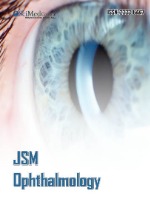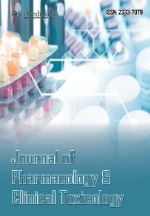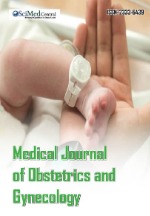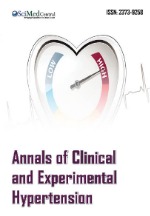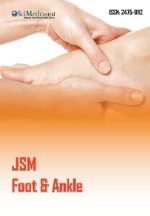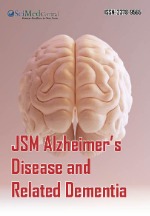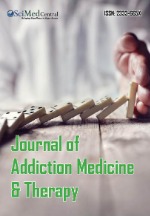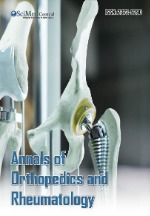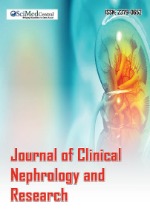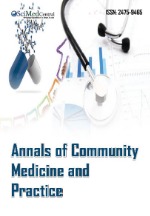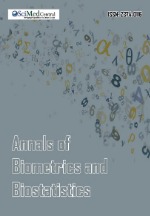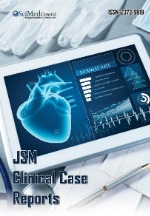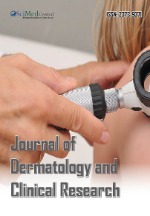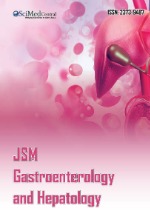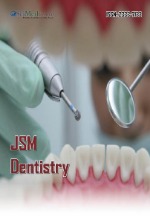Anti-PDGF Receptor Autoantibodies Isolated from Scleroderma Patients Induce Collagen Matrix Contraction by Human Dermal Fibroblasts
- 1. Department of Clinical and Molecular Science, Polytechnic University of Marche, Ital
Abstract
Scleroderma is a chronic fibrotic disease which can affect skin and internal organs, such as lung and kidney, resulting in significant morbidity. Fibroblasts from lesional areas of scleroderma patients show excessive oxygen species production, activated MERK/ERK cascade, and increased a-smooth muscle actin and type I collagen expression. Our group has identified stimulatory anti-PDGF receptor autoantibodies in the serum of scleroderma patients capable of converting normal fibroblasts into scleroderma-like cells. In this study, we want to investigate whether scleroderma autoantibodies are involved in other biological effects, such as matrix contraction, proliferation and migration and to assess whether these effects are mediated by PDGFR pathway.
Keywords
Scleroderma, Autoantibody, PDGF receptor, Fibroblasts
Citation
Spadoni T, Mancini M, Luchetti MM, Baroni SS, Gabrielli A (2017) Anti-PDGF Receptor Autoantibodies Isolated from Scleroderma Patients Induce Collagen Matrix Contraction by Human Dermal Fibroblasts. J Dermatolog Clin Res 5(1): 1090.
ABBREVIATIONS
SSc: Scleroderma; N: Normal; Fbs: Fibroblasts; ECM: Extracellular Matrix; α-SMA: α-Smooth Muscle Actin
INTRODUCTION
Systemic sclerosis or scleroderma (SSc) is characterized by immunologic abnormalities, injury of endothelial cells, and tissue fibrosis [1,2]. Fibroblasts are the principal biosynthetic cells producing collagens, fibronectins, and other components of the extracellular matrix (ECM). Under specific stimuli, fibroblasts also differentiate in myofibroblasts, a specialized contractile cell type responsible for wound closure and tissue contraction [3,4]. This differentiation is believed to be of major importance in all forms of fibrosis, including SSc. As a potent mitogen and chemo attractant for fibroblasts, platelet-derived growth factor (PDGF) has been implicated in the pathophysiology of SSc. Expression of both PDGF receptor (PDGFR) α and PDGFR β is increased in SSc tissue, specifically on fibroblasts and pericytes.
Our group found stimulatory autoantibodies anti-PDGFR in the serum of patients with SSc and demonstrated that these antibodies (SSc IgG) recognized native PDGFR, inducing tyrosine phosphorylation and ROS accumulation and stimulating type I collagen–gene expression and myofibroblast phenotype conversion in normal human primary fibroblasts [5,6].
Until now, our research focused on fibroblasts interacting with two-dimensional (2D) substrates. To replicate the mechanical responses and signaling contexts that occur in the tissue environment, fibroblasts should be surrounded by a matrix that can be remodeled [7]. In this study, we optimized a three dimensional (3D) collagen matrix cell culture system to determine new biological effects of SSc IgG in normal fibroblasts and the molecular mechanisms that are involved in.
MATERIALS AND METHODS
Fibroblast culture
Primary dermal fibroblasts were isolated from skin biopsies taken from the forearms of healthy controls (n = 3) and the involved forearms of patients with diffuse scleroderma (n= 3). After collagenase digestion of the skin biopsy specimens, fibroblasts were cultured as already described [8].
Serum IgG purification
mmunoglobulins were purified from serum of healthy controls and scleroderma patients using gravity-flow columns packed with protein A/G agarose (Pierce) as already described [6].
Collagen gel contraction
Neutralized collagen solution (BD) containing harvested fibroblast was allowed to polymerize for 1 hour at 37. Matrices were gently released from the underlying culture dish and stimuli were added. To quantify contraction, matrices were washed, placed in a flat surface, and diameter was measured.
Western blot
Collagen matrix was treated with collagenase (Sigma) and cells were harvested in cold RIPA buffer. Samples were resolved by 4-12% gradient SDS-PAGE (Thermo), transferred onto nitrocellulose membrane, and immunoblots were incubated with antibodies against α-SMA (Sigma) and pERK (Santa Cruz). ERK (Santa Cruz) was used as control for normalization. After incubation with horseradish peroxidase (HRP) – conjugated IgG antibodies (Santa Cruz), signals were detected with ECL Western Blotting Detection Reagents (Amersham).
Proliferation assay
Cell proliferation was determined by 5-bromo-2’- deoxyuridine (BrdU) incorporation assay (Roche). Briefly, cells were seeded in 96 well plates and then pulsed for 6 hours with BrdU. Plates were analyzed in a plate reader at 450 nm (Victor 2, PerkinElmer).
Migration assay
Migration was studied through wound scratch assay, as previously described [9].
RESULTS AND DISCUSSION
Research on fibroblast biology in 3D-collagen matrix offers new opportunities to understand the reciprocal and adaptive interactions between cells and surrounding matrix in a tissuelike environment.
In order to investigate the ability of fibroblasts isolated from normal (N Fbs) and scleroderma skin (SSc Fbs) to contract extracellular matrix (ECM), we seeded cells within a collagen matrix and the cell contractility was evaluated by measuring the gel size at different time points. According with the literature, we observed that SSc Fbs continuation no para change.
Fbs were characterized by an enhanced ability to contract ECM (Figure 1A)

Figure 1 Scleroderma (SSc Fbs, A) and normal fibroblasts (N Fbs, B) were harvested and allowed to polymerize in a neutralized collagen solution, in the presence or absence of SSc IgG (C) or PDGF (D) for different time points. Diameter of matrices was measured (*p <0.05, compared to specific control cells).
respect to control cells (Figure 1B). To assess whether stimulated N Fbs showed contractile features similar to SSc Fbs, normal cells were seeded within a collagen matrix in the presence of IgG isolated from scleroderma patients (SSc IgG, 200 µg/ml) or PDGF (10 ng/ml). After 3 hours of polymerization, we observed that N Fbs stimulated with SSc IgG (Figure 1C) or PDGF (Figure 1D) showed a significant increased in gel contraction, similar to SSc Fbs. IgG isolated from healthy controls (N IgG) had no effect in contractile modifications.
Since we have previously demonstrated that SSc IgG activated normal cells through PDGFR pathway, we wondered whether the ability to contract ECM is influenced by PDGFR activation. SSc Fbs and stimulated N Fbs were allowed to polymerize collagen matrix in the presence of AG1296 (10 µM, Calbiochem), a chemical inhibitor of PDGFR phosphorylation. AG1296 incubation reverted the ability to contract ECM in both SSc Fbs (Figure 2A) and stimulated N Fbs (Figure 2B).

Figure 2 Scleroderma (SSc Fbs, A) and normal fibroblasts (N Fbs, B) were harvested and allowed to polymerize in a neutralized collagen solution, in the presence or absence of SSc IgG and AG1296. Diameter of matrices was measured (*p<0.05, compared to unstimulated cells).
These results suggest that SSc IgG enhance N Fbs contractility through PDGFR signaling.
The expression of α-smooth muscle actin (α-SMA) is crucial for the development of contractile forces and leads to the differentiation of fibroblasts into myofibroblasts. After 3 hours of polymerization, cells were harvested and contents of α-SMA were measured by western blot. As shown in Figure 3, SSc Fbs (Figure 3A) and stimulated N Fbs (Figure 3B) showed an over expression of α-SMA compared to control cells, and AG1296 incubation reverted normal protein levels.

Figure 3 Scleroderma (SSc Fbs, A) and normal fibroblasts (N Fbs, B) in the presence or absence of SSc IgG and AG1296 were harvested after collagen matrix polymerization. Samples were subjected to western blot analysis.
We then sought to clarify the molecular mechanism through which SSc IgG promoted cell contraction. MEK/ERK cascade plays a key-role in actin stress fiber formation in fibroblasts and ROS-mediated cell activation. Thus, to investigate the contribution of MEK/ERK signaling, we analysed the phosphorylation status of ERK in SSc Fbs and stimulated N Fbs. We found that SSc Fbs (Figure 3A) and stimulated N Fbs (Figure 3B) displayed enhanced ERK activation compared to control cells and AG1296 incubation reverted phosphorylation levels of ERK.
These findings suggest that, through the activated PDGFR pathway, SSc IgG enhance α-SMA expression and ERK phosphorylation status, leading to a significant increased in cell contractility.
Differentiation of fibroblasts into myofibroblasts in SSc coincides with an increase in cell proliferation and migration [10]. To investigate whether the action of SSc IgG was involved in other biological effects than gel contraction, cell proliferation was determined by monitoring BrdU incorporation. SSc IgG significantly increased the number of BrdU positive cells compared to controls and the effect was reversed by incubation with AG1296 (Figure 4A).

Figure 4 Normal fibroblasts (N Fbs) were stimulated with Ssc IgG, in the presence or absence of AG1296, then pulsed for 6 hours with BrdU and analysed in a plate reader at 450 nm for valuating proliferation (A) or observed after scratch assay for measuring migration (*p<0.05, *p<0.01 compared to unstimulated.
The in vitro scratch assay was used to study the effect of SSc IgG on cell migration. Incubation with SSc IgG enhanced migration in N Fbs compared to unstimulated cells, whereas AG1296 incubation led to minimal SSc IgG-induced migration (Figure 4B).
CONCLUSION
According to our results, we conclude that SSc IgG induced contractility in normal cells comparable to SSc fibroblasts. Blocking PDGFR activation, the contraction ability of both SSc fibroblasts and Ssc IgG stimulated normal cells was reverted. The physical parameter of gel contraction was supported by the level of α-SMA expression in SSc IgG stimulated cells versus control cells and comparable to SSc fibroblasts. Moreover we found that the pathological contractile activity of SSc fibroblasts or SSc IgG stimulated normal cells is an ERK-dependent mechanism. Finally, SSc IgG modulate other biological effects, such as proliferation and migration in normal fibroblasts, through PDGF signaling. These data support our thesis based on the importance of Ssc IgG biological activity in the pathogenesis of scleroderma.


